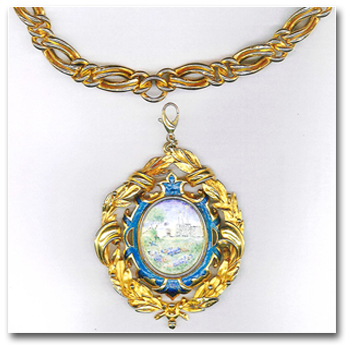The word ‘Mayor’ comes from the Latin word ‘Magnus’ meaning ‘great’. The origins of Mayors in Britain date back to the Norman conquest, and Lichfield has had a Mayor since 1686. While sometimes also referred to as ‘Bailiff’, from 1836 they were always called ‘Mayor’.
During the Middle Ages a Mayor was the ‘First Citizen’ of a town with the Council to assist him He was the ‘Custodian of the Peace’ acting as a judge in the Borough’s courts
By the seventeenth century the role of Mayor had become very powerful – they were the constitutional monarch of the City, a speaker for the Council and a leader of the community.
Although a modern mayor is far less powerful, they still fulfil these roles to a certain extent, but nowadays their function is more symbolic.
In Lichfield the Mayor presides over the City Council and specific Civic events, although the Mayor is not part of the District, which covers a much wider area, and has a Chairman.
The Mayor’s power is restricted to the City area and there is a Deputy Mayor to assist when needed.
Lichfield also has a Sheriff, who performs a different function from the Mayor, but they often attend events together as representatives of the City, and jointly host some Charity events.
A Mayor attends many charity and community events during their year in office – often in excess of 200, and together with the Sheriff, raises a considerable amount for charity.
The Mace is a symbol of the Mayor’s authority and the robes have traditionally been worn to distinguish the Mayor from other citizens. The chains are a symbol of the Mayor’s right to perform the Mayoral duties. The robes and accessories are usually only worn for civic processions and special events held at the Guildhall. The Mayor wears chains for various engagements, but only wears robes for very special events.
Mayor of Lichfield, Cllr Claire Pinder-Smith
